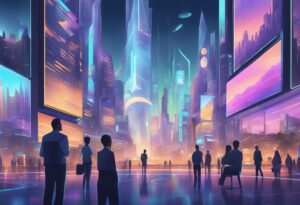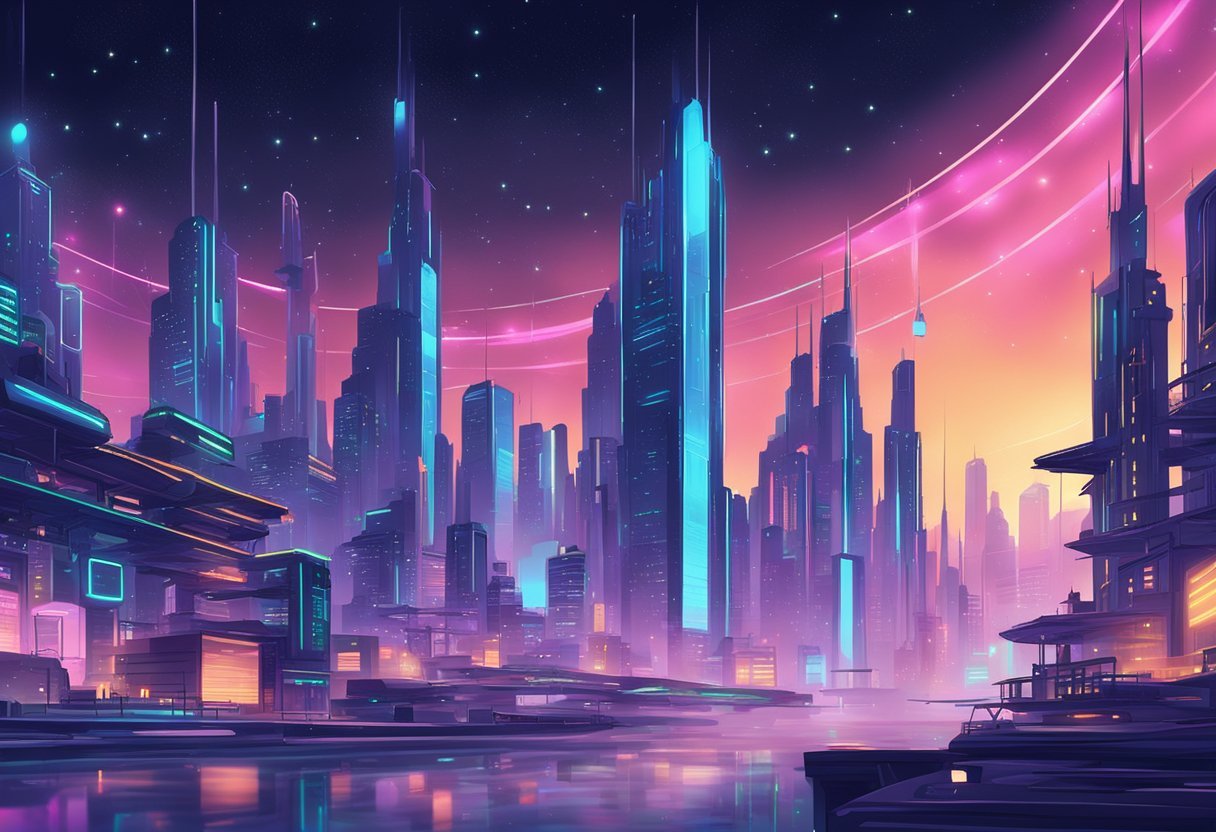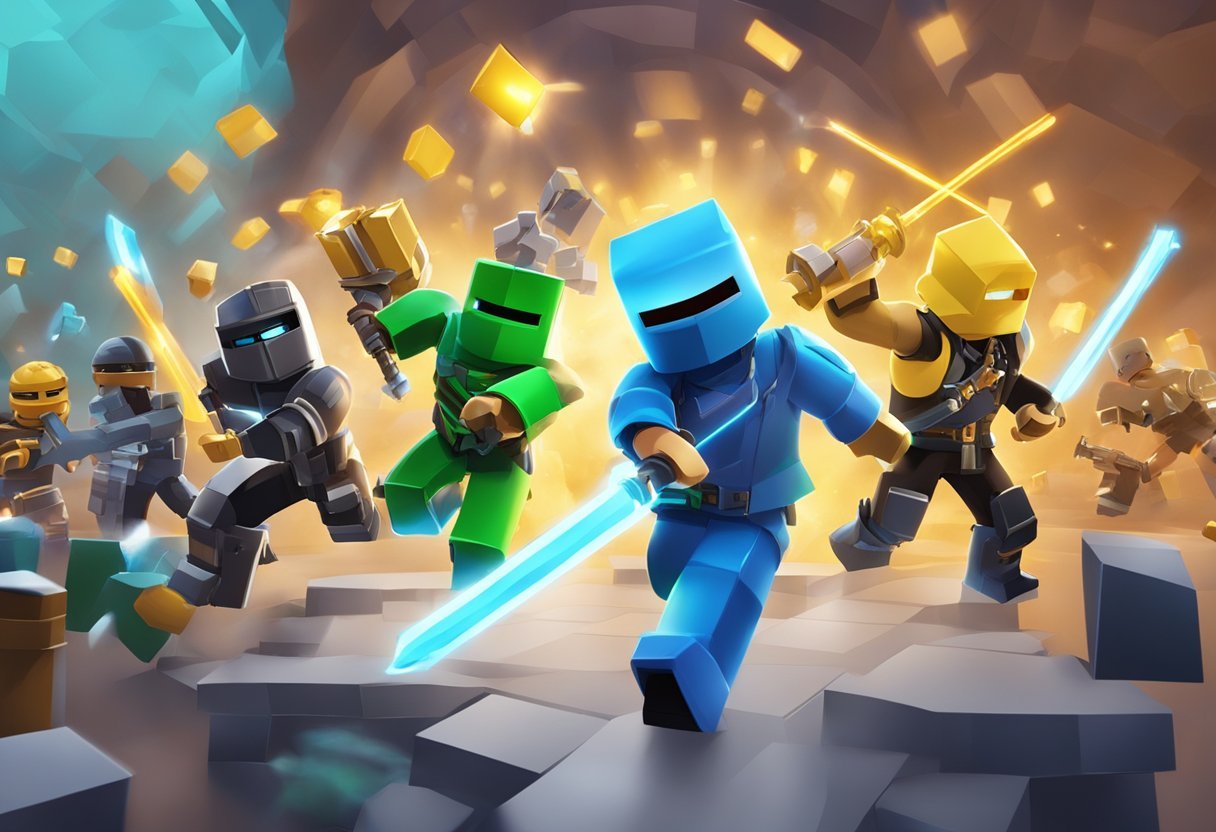The metaverse is a virtual world where users can create and interact with digital representations of themselves and their surroundings. It is a rapidly evolving technology that has the potential to change the way we live, work, and play. With the rise of virtual reality and augmented reality, the metaverse is becoming more accessible and more immersive than ever before.
Creating for the metaverse is an exciting opportunity for developers, artists, and entrepreneurs. The possibilities are endless, from designing virtual homes and businesses to creating immersive gaming experiences and social networks. As the technology continues to evolve, so too will the opportunities for innovation and creativity.
The metaverse is still in its early stages, but it is already attracting attention from some of the biggest names in tech. Companies like Facebook, Google, and Microsoft are investing heavily in the development of the metaverse, and startups are popping up all over the world to explore its possibilities. As the technology continues to mature, it is likely that we will see even more exciting developments in the years to come.
How is the metaverse created?
The metaverse is a virtual world where people can interact with each other in an immersive environment. Creating a metaverse requires a lot of resources, including hardware, software, and a team of experts. This section explores how to prepare for the metaverse and how much it costs to build one.
How to prepare for the metaverse
To prepare for the metaverse, companies need to invest in the latest technologies, such as virtual reality (VR), augmented reality (AR), and artificial intelligence (AI). They also need to hire experts in these fields to create a seamless experience for users. Companies need to consider the ethical implications of creating a virtual world and how it will impact society.
How much does it cost to build a metaverse
Building a metaverse can be expensive, with costs ranging from hundreds of thousands to millions of dollars. The cost depends on factors such as the size of the virtual world, the complexity of the interactions, and the level of detail in the graphics.
Companies need to invest in hardware such as VR headsets, high-end computers, and servers to host the virtual world. They also need to hire software developers, designers, and other experts to create the virtual world.
Creating a metaverse requires a significant investment of time, money, and resources. Companies need to be prepared to invest in the latest technologies and hire experts in the field. They also need to consider the ethical implications of creating a virtual world and how it will impact society.
How to Create Items for the Metaverse

Creating items for the Metaverse is an exciting and creative process that allows users to express themselves and showcase their artistic abilities. Here are the steps to create items for the Metaverse:
- Choose a Platform: Before creating any item, you need to choose a platform where you want to create and showcase your item. Some popular platforms include Decentraland, Somnium Space, and Cryptovoxels.
- Understand the Platform’s Guidelines: Once you choose a platform, it’s important to understand its guidelines for creating items. Each platform has its own set of rules and requirements for creating and uploading items.
- Create the Item: After understanding the guidelines, you can start creating your item. You can use 3D modeling software such as Blender or Maya to create your item. Alternatively, you can use online tools such as Zepeto Studio to create items quickly and easily.
- Upload the Item: Once you create your item, you need to upload it to the platform. Follow the platform’s guidelines for uploading items and ensure that your item meets all the requirements.
- Showcase the Item: After uploading the item, you can showcase it to the Metaverse community. You can display it in your virtual space or sell it on the platform’s marketplace.
Creating items for the Metaverse requires creativity, technical skills, and adherence to platform guidelines. By following these steps, users can create and showcase their items in the Metaverse.
Creating Content for the Metaverse
Creating content for the metaverse is an exciting and rapidly growing field. Content creators are essential in shaping the virtual world, and they have the power to create immersive experiences that can engage users for hours. In this section, we will explore three essential aspects of creating content for the metaverse: designing virtual experiences, developing for VR and AR platforms, and building engaging virtual events.
Designing Virtual Experiences
Designing virtual experiences requires a combination of creativity and technical skill. To create an immersive experience, designers must consider the user’s perspective, including the layout, lighting, and sound design. It is essential to create an environment that feels realistic and engaging while also being easy to navigate.
Tools like Unity and JavaScript are essential for designing virtual experiences. Unity is a popular game engine that allows developers to create interactive 3D experiences, while JavaScript is a programming language that can be used to create interactive web applications.
Developing for VR and AR Platforms
Developing for VR and AR platforms requires an understanding of the hardware and software that powers these devices. VR headsets like the Oculus Rift and HTC Vive require high-end hardware to run smoothly, while AR platforms like Apple’s ARKit and Google’s ARCore require a powerful smartphone or tablet.
Developers must also consider the unique capabilities of VR and AR platforms, such as spatial audio and hand tracking. By leveraging these capabilities, developers can create experiences that feel more immersive and engaging.
Building Engaging Virtual Events
Building engaging virtual events requires careful planning and execution. Content creators must consider the user’s experience from start to finish, including the registration process, the event itself, and post-event follow-up.
One way to engage users is to create interactive elements, such as mini-games or quizzes. Another way is to incorporate social features, such as chat rooms or virtual networking events. By creating engaging events, content creators can build a loyal following and establish themselves as leaders in the metaverse.
Creating content for the metaverse requires a combination of creativity and technical skill. By designing virtual experiences, developing for VR and AR platforms, and building engaging virtual events, content creators can shape the future of the virtual world.
Metaverse Platforms and Tools
The Metaverse is a rapidly growing space, and there are various platforms and tools available for developers to create immersive experiences. Choosing the right platform and tools is crucial to creating a successful Metaverse experience.
Choosing the Right Platform
There are several Metaverse platforms available, including Second Life, Unity3D, Unreal Engine 4, and CryEngine. Each platform has its own strengths and weaknesses, and developers must choose the one that best suits their needs.
Second Life is ideal for creating social experiences, while Unity3D and Unreal Engine 4 are more suited for game development. CryEngine is best for creating high-quality graphics and realistic environments.
Utilizing Development Tools
Developers can utilize various development tools to create immersive experiences in the Metaverse. Blender is a free and open-source tool for creating 3D content, while Maya is a professional-grade tool used for modeling, animation, and rendering.
Other development tools include the Substance suite for creating textures and materials, and Houdini for procedural content generation.
Leveraging Cross-Platform Capabilities
Cross-platform capabilities are essential for creating a seamless Metaverse experience. Developers can leverage cross-platform capabilities by using tools like Web3.js, which allows for the creation of decentralized applications using blockchain technology.
NFTs (Non-Fungible Tokens) can also be used to create unique and valuable digital assets that can be traded across platforms.
In addition, developers can leverage branded content to create unique experiences in the Metaverse. Brands can create their own virtual spaces and events, providing users with a unique experience that aligns with their brand.
Choosing the right platform and tools, utilizing development tools, and leveraging cross-platform capabilities are essential to creating a successful Metaverse experience.

Monetization and Economy in the Metaverse
The metaverse, a virtual world that is being developed, has the potential to become a new economy with its own currency, virtual real estate, and digital assets.
The monetization of the metaverse will be a key factor in its success. In this section, we will explore some of the ways in which the metaverse can be monetized and the economy that will emerge around it.
Understanding NFTs and Digital Assets
Non-fungible tokens (NFTs) are unique digital assets that can be bought, sold, and traded on the blockchain. NFTs have become popular in the art world, but they can also be used to represent virtual real estate, virtual goods, and other assets in the metaverse.
NFTs provide a way to prove ownership and authenticity of digital assets, which is essential in a virtual world where everything is digital.
Exploring Virtual Real Estate
Virtual real estate is another way to monetize the metaverse. Just like in the real world, virtual real estate can be bought, sold, and rented.
Virtual real estate can include anything from a small plot of land to an entire virtual city. The value of virtual real estate will depend on its location, size, and the demand for it.
Engaging with the Creator Economy
The creator economy in the metaverse will be similar to the creator economy in the real world. Creators will be able to make money by creating content, selling virtual goods, and offering services.
The creator economy will be driven by the demand for content and the popularity of creators. Smart contracts can be used to automate payments and ensure that creators are paid for their work.
The monetization of the metaverse will be driven by NFTs, virtual real estate, and the creator economy. The economy of the metaverse will be based on its own currency, which will be used to buy, sell, and trade virtual goods and services. The metaverse has the potential to become a new economy with its own rules and opportunities.
Building a Community and Network
Building a community and network is essential for creating a successful presence in the metaverse. It is important to foster user interactivity, networking, and collaboration while also protecting users and ensuring security.
Fostering User Interactivity
User interactivity is key to building a thriving community in the metaverse. Creating engaging experiences and encouraging user participation is essential to keep users coming back.
This can be achieved through interactive events, challenges, and quests. Providing users with the ability to customize their avatars and virtual spaces can help build a sense of ownership and investment in the community.
Networking and Collaboration
Networking and collaboration are also important aspects of building a community in the metaverse. Connecting with other creators and communities can help expand your reach and provide new opportunities for collaboration. This can be achieved through attending virtual events, joining online forums or groups, and reaching out to other creators directly.
Protecting Users and Ensuring Security
Protecting users and ensuring security is crucial when building a community in the metaverse. This can be achieved through implementing strong security measures such as two-factor authentication, encryption, and regular security audits.
Creating clear guidelines and rules for user behavior can help prevent harassment and other harmful behavior.
Building a community and network in the metaverse requires a focus on user interactivity, networking, and collaboration while also prioritizing user protection and security.

Frequently Asked Questions
What are the initial steps to develop a metaverse platform?
Developing a metaverse platform requires a clear understanding of the project’s goals and target audience. The first step is to identify the core features and functionalities of the platform.
This involves defining the 3D environment, user interface, and the underlying technology stack. Once the initial planning is complete, it is essential to form a team of skilled developers, designers, and project managers to execute the project.
What software is required to build a metaverse environment?
Building a metaverse environment requires a combination of software tools, including 3D modeling software, game engines, and programming languages. Popular 3D modeling tools include Blender, Maya, and 3DS Max. Game engines like Unity and Unreal Engine are commonly used for building the virtual environment. Programming languages such as C++, C#, and Java are used for developing the underlying software architecture.
How can one estimate the cost of creating a metaverse project?
The cost of a metaverse project depends on several factors, including the scope of the project, the complexity of the virtual environment, and the team’s expertise.
A rough estimate can be made by calculating the total hours required for development and multiplying it by the hourly rate of the development team. It is also essential to consider the cost of software licenses, hardware, and other development tools.
Are there any tutorials available for beginners to learn metaverse development?
Several online resources are available for beginners to learn metaverse development. These resources include video tutorials, online courses, and documentation.
Popular online courses include Udemy’s “Create a Metaverse Like Second Life” and Coursera’s “Introduction to Virtual Reality.” The Unity and Unreal Engine documentation provides comprehensive guides for developing virtual environments.
What does a proof of concept (POC) for a metaverse look like?
A proof of concept (POC) for a metaverse project is a working prototype that demonstrates the core features and functionalities of the virtual environment. The POC typically includes a basic 3D environment, user interface, and navigation controls. It is essential to keep the POC simple and focused on the core features to demonstrate the project’s feasibility.
Can individuals develop their own metaverse applications, and if so, how?
Individuals can develop their own metaverse applications using the available software tools and online resources. It is essential to have a clear understanding of the project’s goals and target audience.
Beginners can start with online courses and video tutorials to learn the basics of metaverse development. Once the basics are mastered, individuals can start building their own virtual environments using 3D modeling software, game engines, and programming languages.




